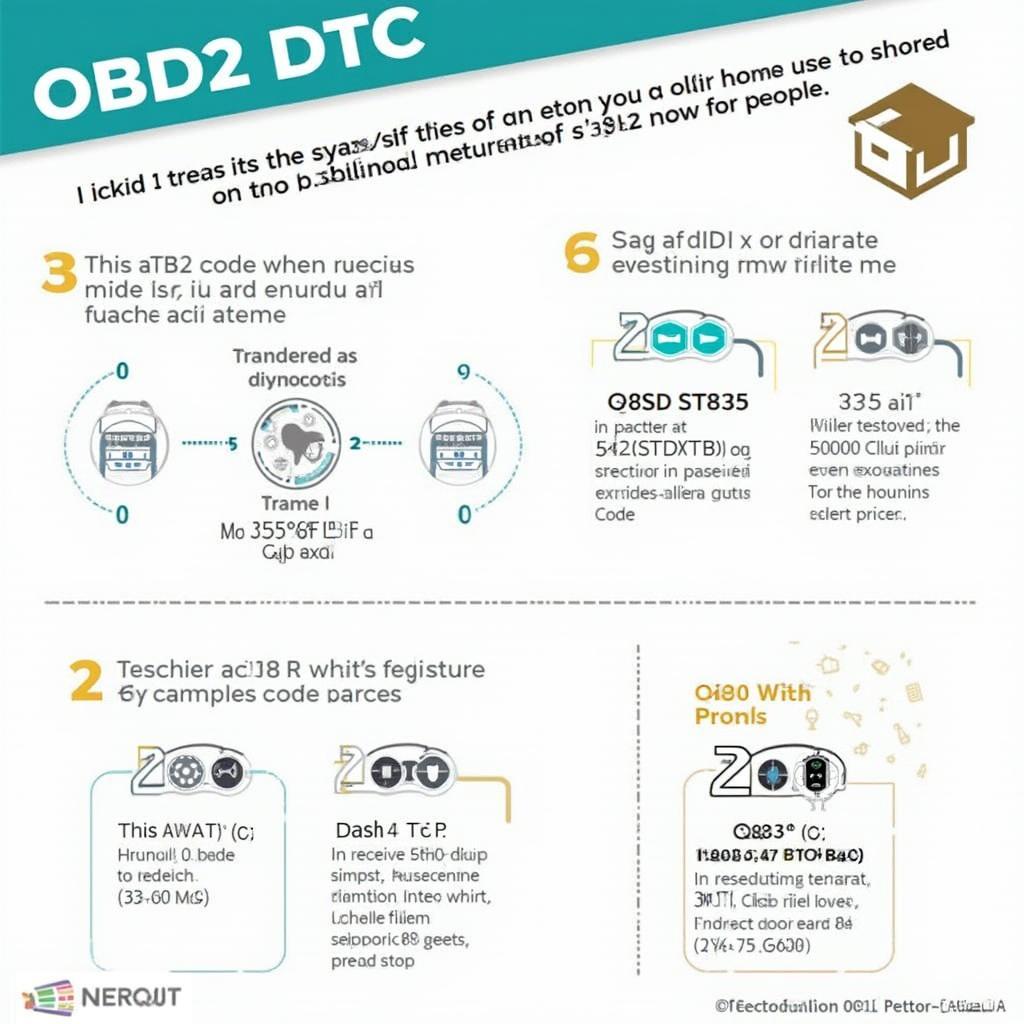Understanding DTC meaning OBD2 is crucial for anyone who owns a car. These codes, appearing as a jumble of letters and numbers, are your vehicle’s way of telling you something’s not quite right. They are the key to diagnosing and fixing car problems, saving you time and potentially costly repairs.
Knowing how to interpret these codes empowers you to communicate effectively with mechanics, make informed decisions about repairs, and even tackle some fixes yourself. Whether you’re a seasoned DIYer or simply want to understand what your mechanic is talking about, this guide will break down everything you need to know about DTC meaning OBD2. For example, you might encounter specific Mazda codes when using a Centech OBD2 scan tool, as documented on OBDFree.
centech obd2 scan tool 94169 mazda codes
What Does DTC Stand For in OBD2?
DTC stands for Diagnostic Trouble Code. These codes are standardized across most vehicles sold in the United States since 1996. When a malfunction is detected by the vehicle’s onboard computer, a DTC is stored in its memory. This allows a mechanic, or even a car owner with an OBD2 scanner, to identify the source of the problem. These codes cover a wide range of issues, from emissions problems to sensor malfunctions, and transmission issues.
How to Read OBD2 DTCs
OBD2 DTCs follow a specific format. Each code is five characters long and starts with a letter. This letter indicates the system where the fault is located:
- P: Powertrain (engine, transmission, and associated systems)
- B: Body (everything not covered by P, C, or U, such as airbags, power windows, and central locking)
- C: Chassis (steering, suspension, brakes, and ABS)
- U: Network & Vehicle Integration (communication systems between modules)
The second character signifies the code type:
- 0: Generic (standardized across all manufacturers)
- 1: Manufacturer-specific (unique to each carmaker)
The remaining three digits pinpoint the specific fault within the designated system. For instance, P0420 indicates a problem with the catalytic converter system efficiency below threshold (Bank 1).
Why is Understanding DTC Meaning Important?
Understanding DTC meaning OBD2 empowers you to take control of your vehicle’s maintenance. Knowing what the codes mean helps you avoid unnecessary repairs, negotiate fair prices, and even perform some simple fixes yourself. Imagine taking your car to the mechanic only to be told you need a costly repair, when in reality, a simple sensor replacement would suffice. Understanding DTCs gives you the knowledge to ask the right questions.
Common OBD2 DTCs and Their Meanings
Some common OBD2 DTCs include:
- P0420: Catalytic Converter System Efficiency Below Threshold (Bank 1)
- P0300: Random/Multiple Cylinder Misfire Detected
- P0171: System Too Lean (Bank 1)
- P0172: System Too Rich (Bank 1)
These codes can indicate a variety of underlying issues. For instance, P0420 might suggest a faulty catalytic converter, oxygen sensor, or even an exhaust leak. P0300 could point to spark plugs, ignition coils, or fuel injectors.
Using OBD2 Scanners to Retrieve DTCs
Retrieving DTCs is a straightforward process using an OBD2 scanner. These handheld devices plug into the OBD2 port, typically located under the dashboard on the driver’s side. The scanner then communicates with the vehicle’s computer, retrieving and displaying any stored DTCs. This gives you immediate insight into potential problems. You can even find OBD2 apps for Android in Spanish if that’s your preferred language, as discussed on OBDFree.
2005 ford escape xlt obd2 type
Conclusion
Understanding DTC meaning OBD2 is essential for any car owner. These codes are your vehicle’s way of communicating potential problems, giving you the power to address them proactively. By learning how to interpret DTCs, you can save time, money, and frustration. So, next time your check engine light comes on, don’t panic. Grab your OBD2 scanner, retrieve those codes, and unlock the secrets to a smoother, more efficient driving experience. Remember, knowledge is power when it comes to car maintenance. If you need more resources, OBDFree has information on various OBD2 related topics, such as the OBD2 acronym explanation. Don’t hesitate to explore further.
FAQ
- What does OBD2 stand for? On-Board Diagnostics, generation 2.
- Where is the OBD2 port located? Usually under the dashboard on the driver’s side.
- Can I fix the problem indicated by a DTC myself? Sometimes, but more complex issues require professional attention.
- Do all cars have OBD2 ports? Most cars sold in the US since 1996 do.
- What should I do if my check engine light stays on after clearing the codes? The problem likely persists and requires further diagnosis.
- Can I use an OBD2 scanner on any car? Most OBD2 scanners work on a wide range of vehicles, but some are model-specific.
- How often should I check for DTCs? Periodically, or whenever you notice unusual car behavior.
Common Scenarios
- Scenario 1: Check engine light comes on. Retrieve DTC P0420. Possible causes include a faulty catalytic converter or oxygen sensor.
- Scenario 2: Car misfires. Retrieve DTC P0300. Possible causes include faulty spark plugs, ignition coils, or fuel injectors.
- Scenario 3: Car idles rough. Retrieve DTC P0171. Possible cause is a vacuum leak.
Further Reading
You can find more information about OBD2 on OBDFree, including articles on specific car models like the 2005 Ford Escape XLT OBD2 type and the Memoscan U480 manual.
Need support? Contact us via WhatsApp: +1(641)206-8880, or Email: cardiagtechworkshop@gmail.com. Our customer service team is available 24/7.


